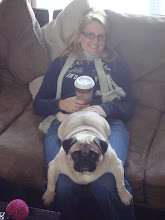Sunday, April 25, 2010
How would you explain the connection between glucose entering the body and energy created by the body to a friend, using your new biochem knowledge?
Glycolysis begins by an input from either dietary glycogen and starch or glycogen stored in your cells. The glycolysis linear reactions occur in 10 steps. The first reaction uses water to break apart glucose molecules known as hydrolysis. A phosphate group is removed from an ATP molecule of energy producing ADP. This removed phosphate group is then added to the glucose molecule forming Glucose-6-phosphate (G6P). In reaction 2, an isomerase enzyme is used that creates an isomer of G6P. An isomer has the same number of atoms and types of atoms but is configured differently. The isomer created is D-Fructose-6-phosphate (F6P). In reaction 3, 1 ATP is used to phosphorylate F6P. Most phosphorylation reactions are done so via kinases which can add phosphate groups. D-Fructose-1,6-biphosphate is created. It is important to note that the product of the previous reaction becomes the reactant of the next. Glycolysis reaction 4 cleaves the F1,6P by using an aldolase creating Dihydroxyacetone phosphate and D-Glyceraldehyde-3-phosphate (D3P) which are isomers of eachother. In reaction 5 only D3P is formed and can then be used by reaction 6. This reaction is a redox reaction. These two reactions of adding oxygen and adding hydrogen happen together. Step 7 uses a kinase to remove the phosphate group of the 2 molecules creating 2 ATP molecules. Reaction 8 isomerases the product of the previous step. For the next reaction, the removal of water, dehydration, occurs. Finally, in reaction 10 hydrolysis and phosphorylation occur. The net gain of glycolysis is 2 ATP and 2 molecules of Pyruvate created. Gross gain is 4 ATP, but because the process of glycolysis uses 2 ATP, this results in the net gain of 2. Although the process seems complicated and overwhelming, what is important to take away is the idea that through glycolysis, energy is created that is then used by the body from molecular activities to muscle movements. By looking at how glycolysis works, I have great appreciation of how our bodies function.
Saturday, April 17, 2010
What knowledge have you connected with past knowledge? (2)
Having struggled through organic chemistry, I realize now the connections and reasons why taking organic chemistry before biochemistry is useful. I am finding that I retained more information than initially thought. Monosaccharides and polysaccharides I have seen before in biology, along with glycosidic bonds and are depicted in many slides. I did not understand what mechanism the linkage used. The concern at the time was only to understand the basic shape and what role starches play with regard to aquiring energy from them. Now in biochemistry, I understand not only the reason for the shape and type of linkages but also why and how naming of the different starches are done. It completes the understanding of the whole starch concept by going deeper and filling in the gaps. Taking chemistry I learned about redox reactions, but did not know where these reactions were found and what practical applications they had. Biochemistry links the past knowledge with real applications that does make it easier to learn and understand.
Subscribe to:
Posts (Atom)
